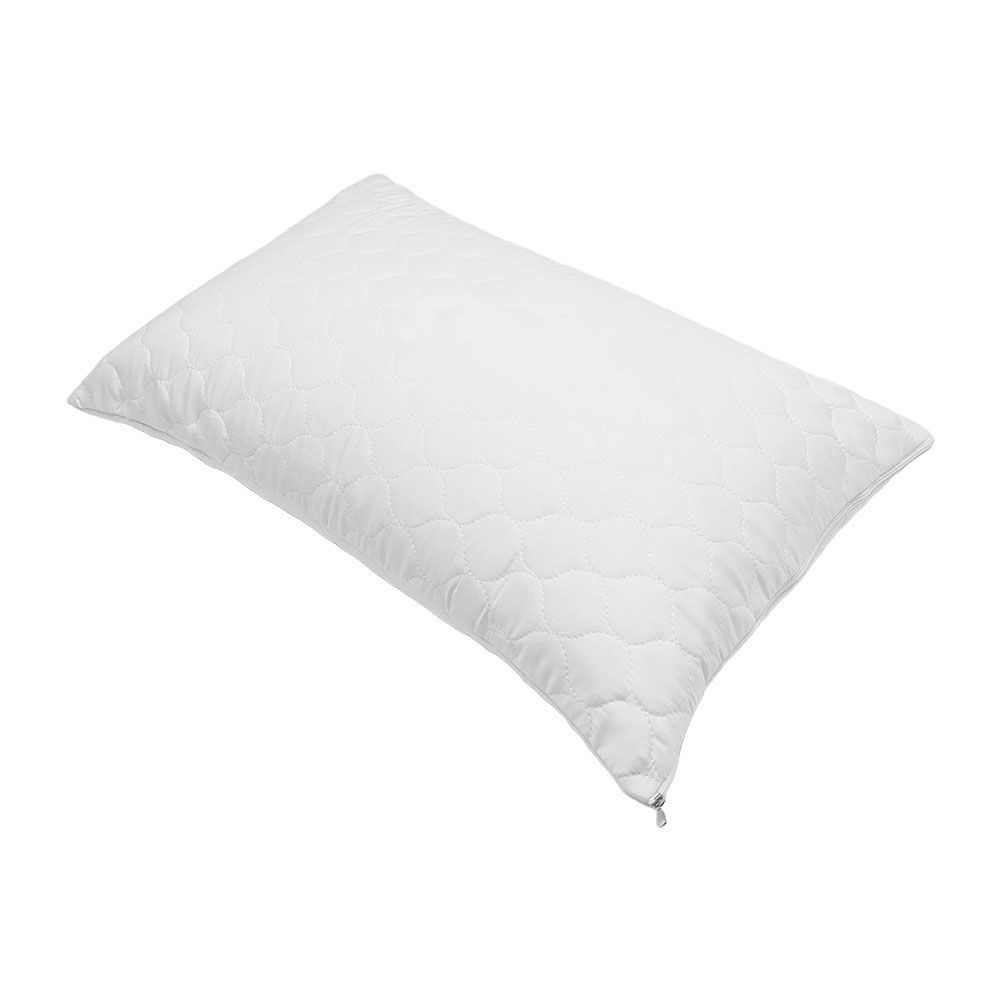Pillow protectors
Extend the life of your precious pillows with our essential collection of protectors, where premium pillow protectors serve as the first line of defense against moisture, allergens, and everyday wear that can compromise your comfort and hygiene over time.
Our innovative pillow protector waterproof designs combine advanced fabric technology with breathable materials, creating an invisible barrier that shields your pillows from spills, perspiration, and humidity while maintaining the natural airflow and softness you love about your bedding. These sophisticated protectors represent more than just basic coverage – they're engineered to preserve the integrity of your pillow's fill, whether down, feather, or synthetic, by preventing the accumulation of oils, dust mites, and bacteria that can degrade materials and trigger allergic reactions.
The quilted micro fiber is the popular option due to it being the most breathable and machine friendly option. By investing in quality pillow protector waterproof solutions, you're not only safeguarding your health and comfort but also maximizing the return on your pillow investment, as these protectors can double or even triple the lifespan of your bedding while maintaining factory-fresh cleanliness and support.
Whether you're protecting luxury down pillows, memory foam investments, or everyday bedding, our protectors collection offers the perfect marriage of functionality and comfort, proving that the best pillow protectors are the ones you'll never notice.
Quilted micro fiber protectors

Quilted Micro Fibre
Highly recommend. Widely used in areas that are high humidity. Quilted micro fiber is breathable and mashing wash friendly.
quilted waterproof
Can be used in areas that have colder temperatures. Don't recommend to place in to tumbler dryers.
Not a popular choice but is easy to wash and care for.
toweling waterproof
Sizes that we offer are the following. Standard (45x70) King (50x90)
Sizes
get your quote today
Get in touch so that we can do a a formal quote for you today!
Frequently asked questions
What is the point of a pillow protector?
A pillow protector serves as a barrier between your pillow and pillowcase, extending your pillow's lifespan significantly. It protects against sweat, oils, dead skin cells, dust mites, allergens, and spills that can penetrate through pillowcases. This protective layer keeps your pillow fresher and more hygienic, while also maintaining its shape and support over time. For people with allergies or asthma, pillow protectors create an additional defense against dust mites and other allergens that can accumulate in pillows.
What type of pillow protector is the best?
The best pillow protector depends on your specific needs, but zippered encasement protectors offer the most comprehensive protection. Look for protectors made from tightly woven fabrics with a pore size smaller than 6 microns to effectively block dust mites. Cotton terry cloth protectors provide good breathability and comfort, while waterproof options with breathable membranes (like polyurethane backing) offer liquid protection without sacrificing airflow. For allergy sufferers, hypoallergenic materials like bamboo or specially treated cotton work well. Avoid vinyl protectors as they can be noisy and trap heat.
How often do you wash a pillow protector?
Pillow protectors should be washed every 2-4 weeks, or at least once a month. If you sweat heavily at night, have allergies, or are recovering from illness, wash them more frequently—potentially weekly. Always wash pillow protectors in hot water (at least 130°F) to kill dust mites and bacteria. Use a gentle, fragrance-free detergent and avoid fabric softeners, which can reduce the protector's effectiveness and breathability. If you are a loding business then after every guest has checked out you must wash the protectors.
Should the pillow protector be bigger than the pillow?
A pillow protector should fit snugly around your pillow without being too tight or too loose. It should be the same size as your pillow—not bigger. An oversized protector will bunch up and create uncomfortable lumps, while one that's too small won't provide complete coverage and may be difficult to put on. Most protectors are designed with slight stretch or are cut to accommodate the pillow's loft, so choose the protector that matches your pillow's dimensions (standard, queen, or king).
Why do pillow protectors turn yellow?
Pillow protectors turn yellow due to a combination of factors, primarily the natural oils from your skin and hair, sweat, and oxidation over time. Body oils and perspiration contain proteins and minerals that can cause fabric discoloration, especially when exposed to heat and time. Poor washing habits, such as using water that's too cool or not washing frequently enough, can allow these substances to build up and set into the fabric. Using bleach or harsh chemicals can also cause yellowing through chemical reactions with the fabric fibers. To prevent yellowing, wash regularly in hot water, use enzyme-based detergents, and ensure thorough rinsing.